I was commissioned to write a feature for their first issue on the topic of concert ticket scalping. Click the image below for a closer look, or read the article text underneath.
Issues: To Scalp Or Not To Scalp?
No discussion associated with live music is as emotionally-charged as ticket scalping. Junior spoke to several key players within the live music industry to gauge their opinions on the issue.
“It’s a difficult issue, as in some ways it is a free economy and the laws of supply and demand apply,” begins Chugg Entertainment managing director, Matthew Lazarus-Hall, whose company is currently touring acts like Gorillaz and Rufus Wainwright. “The greater challenge is: would the general public accept dynamic pricing from the start? Do people really care that someone paid more or less than the person they’re sitting beside?”
Lazarus-Hall refers to the practice of changing prices at regular intervals – every few minutes, hours or days – based on actual consumer demand. Introducing dynamic pricing would mean that the quality of a seat directly correlates to the ticket price. In real world terms, it’d mean that those sitting closest to the stage opt to pay more, while those poor souls stuck in the nosebleed section would likely pay substantially less.
This differs from the existing systems offered by Ticketek and Ticketmaster, wherein a flat rate is applied to all seats within particular sections, regardless of their distance from the stage. For example, ticket holders Row AA in section 42 of the Brisbane Entertainment Centre pay the same as those in row ZZ, despite the spatial difference.
“There are about 20 different price types on a plane trip from Sydney to Melbourne,” Lazarus-Hall continues. “Same destination, same experience, and people do not care. Whereas at concerts, people are far more emotional and there’s a perception that the person sitting next to you should pay the same – except when scalping is involved.
“Our preference is that scalping didn’t happen, as the artist misses out on the revenue. We do the best we can [to avoid scalping], but we do not need more legislation,” he concludes.
National ticketing company Moshtix – who provide service for a wide range of music events, like Splendour In The Grass – welcomed a June 2010 Commonwealth Consumer Affairs Advisory Council (CCAAC) review into ticket scalping by conducting their own survey, which garnered responses from around 750 Australian gig-goers. Over half of respondents (54%) had purchased a ticket through an onseller; around a third (35%) had paid more than the market price.
According to Adam McArthur, Moshtix general manager, there’s simply no need for scalping. “We’re against it, because we’ve found that, with the use of some technology tools, you can eradicate scalping without penalising the original ticket purchaser.” These tools include limiting paper ticket delivery by issuing tickets electronically; collecting the names and birthdates of attendees and verifying these details at the point of entry; and a resale facility, which allows ticket holders who can no longer attend events to securely return their ticket to the market.
No such measures have been adopted by Australia’s two biggest ticketing companies, Ticketek and Ticketmaster.
“If they’re not being pushed to do it, then why bother?” asks McArthur. “Both Ticketek and Ticketmaster haven’t been challenged in that large arena market for some time. They just keep offering the same services, because they don’t need to change.” Despite these frustrations, he disagrees with the notion of Government intervention. “Legislation is really difficult to enforce in this industry, so the best thing the Government could do is put some broad guidelines in place.” McArthur notes secure ticket delivery and resale facilities as his top two concerns.
“The government question is hard,” admits the man behind Andrew McManus Presents, whose company is presenting forthcoming tours from Brian Wilson and Guns N’ Roses. For him, it’s more about “the need to make people aware of the risks of buying a scalped ticket, rather than trying to stop scalping.” McManus does point out, however, that he’s against the act of scalping for profit. “On a personal level, it’s unfair for those who line up, wait for hours and miss out on tickets due to some loser buying 50 and selling them on eBay for three times the price, just because he knows the fans will buy it. We put on shows for the fans, not for scalpers to make a buck.”
 Andrew McManus Presents always set a per-transaction ticket limit for their shows in an attempt to curb scalping. The ticket limit “varies from show to show, but is always in place. We also monitor eBay and other similar auction sites,” the promoter says. “Anyone found selling our tickets for profit runs the risk of being reported and having their listing removed, or even having their tickets cancelled. I don’t think sites like eBay should intervene on their own, but if a promoter tells them to take something down, they should. And for the most part, they’re pretty good at doing that for you.”
Andrew McManus Presents always set a per-transaction ticket limit for their shows in an attempt to curb scalping. The ticket limit “varies from show to show, but is always in place. We also monitor eBay and other similar auction sites,” the promoter says. “Anyone found selling our tickets for profit runs the risk of being reported and having their listing removed, or even having their tickets cancelled. I don’t think sites like eBay should intervene on their own, but if a promoter tells them to take something down, they should. And for the most part, they’re pretty good at doing that for you.”
“We do get the odd request from venue owners and promoters, but it’s very rare,” admits eBay Australia‘s Head Of Corporate Communications, Daniel Feiler. “Generally though, unless it’s legislated, we don’t remove the tickets. In Australia, there are laws in Victoria and Queensland around resale of certain types of tickets.”
At present, the only Victorian event impacted is the AFL Grand Final, to which tickets cannot be sold above their face value. In Queensland, it’s unlawful to sell tickets for events held at eight venues – including the Brisbane Entertainment Centre and Suncorp Stadium – for above 10% of their face value.
“If someone does sell a ticket that’s above 10% for an event where the legislation applies, it’s up to the Queensland Police,” says Feiler. “If they want information about either the buyer or seller of that particular trade, then we’ll provide them with the registration details of those people. Then it’s up to them to choose to make an arrest or issue a fine.”
Feiler points out that, for a “blockbuster” event held at Suncorp Stadium – which holds around 52,000 people – typically, only a few hundred will end up on eBay.
“That’s the story that people don’t necessarily hear about,” he says. “There’s an assumption that just because the tickets are being sold on eBay, they’re being sold above face value. Our experience has always been that if you put the tickets in the hands of genuine fans, they’re unlikely to sell them, as they desperately want to go to an event. It really comes down to the promoter, and whether they want to put the systems in place to make sure that genuine fans get tickets first. We don’t see it as eBay’s role to fix up an issue that may or may not be created by poor original distribution in the primary market.”
Enough philosophising about this issue. Junior went straight to the source, and spoke with a pair of ticket resellers (or scalpers, depending on whether you consider it to be a pejorative term): one who operates on eBay, and one who doesn’t.
Stuart Hamilton runs a full-time ticketing business under several eBay usernames , including Chilli Entertainment, though eBay accounts for only “a small part” of his customers; most of his business comes from corporate clients. At the time of writing, Hamilton has over 100 ‘buy it now or make an offer’ listings for events which range from concerts like U2, The Wiggles and Iron Maiden, to non-music events like the AFL Grand Final, The Footy Show and Robin Williams. Is the business profitable?
“Yes and no. At the end of the day, I cover the over heads and make a good wage similar to a middle manager’s wage at any major company,” says Hamilton, who started the four-year old business after leaving his role as senior sales manager. His decision came at a cost: “I often do 10 hours a day on the computer, doing the shit that needs to be done. It’s high stress and high risk: you can lose thousands on a concert if you get it wrong. The trick to this game is to know when to cut your losses, quick. To be honest, I wonder if it’s all worth it at times, and I do have my eye open to new opportunities away from reselling.
“Sometimes we get a big premium for an outstanding located seat,” he continues. “These are usually purchased by a wealthy person who just wants the best. But we don’t get many of the best tickets – maybe four or six per concert if we’re lucky – so we have to make the most of the ‘big hits’, as it’s not always roses.”
To illustrate, he points to his tickets to Powderfinger in Perth, which he’s currently selling for half price ($49 each), thereby losing about $70 a ticket. “With 30 of them, that hurts,” he admits. Some of his customers are happy to pay $60-$120 more for a good ticket simply because they “don’t have the time to go through all the stress and headaches of purchasing from Ticketek, whose internet systems often crash during a big-event sale.”
Hamilton seems content with his role as reseller. “We provide a good service for those who want convenience of purchase, and we’ll often get a better ticket than they could get themselves anyway. If it’s through a safe marketplace like eBay, 99% of the time, no-one will get ripped off. Let the fans have a choice: they don’t have to buy off a reseller, but they then have to make sure they make the effort to get their tickets early.”
Several independent ticket brokers operate outside of the eBay realm, three of whom were publicly dissed by Suncorp Stadium general manager Alan Graham on brisbanetimes.com.au in mid-September: Red Circle, worldticketshop.com, and ticketfinders.com.au. Simon Williams, manager of the latter website, was none too pleased by being tagged by Graham as an “unscrupulous operator”.
“We’re not a fake website,” he tells Junior. “We source and supply tickets to hundreds of clients every year, and fulfil our obligations every time. We do not rip anyone off.”
At time of writing, Ticket Finders’ prices for access to the ‘sold out’ 8 December U2 concert in Brisbane range from $175 (general admission) to $950 (‘Red Zone’ area); face value for these tickets were $99 and $350, respectively. Their web form allows customers to request up to 50 tickets per section.
“Call it scalping if you want, but ticket broking has been around as long as there’s been tickets for events. We operate in a free market based on capitalist ideals. What’s the difference between buying and selling houses and cars, and pieces of paper?” Williams asks. “I think it’s hysterical that people get so worked up about it. Of course, a ticket’s got more of an emotional attachment to it.”
“We provide a service: people can’t find a ticket, then we’ll find it. We pay a premium ourselves to find it, and we charge a premium on top of that. It’s not any different to people buying and selling cars or houses, or any commodity. It’s not like we’re selling drugs or weapons.”

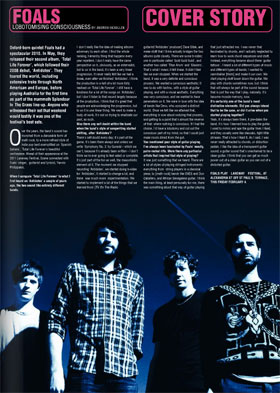
 You mentioned your style of guitar playing. I’ve always been fascinated by Foals’ needly, palm-muted riffs. Were there any particular artists that inspired that style of playing?
You mentioned your style of guitar playing. I’ve always been fascinated by Foals’ needly, palm-muted riffs. Were there any particular artists that inspired that style of playing?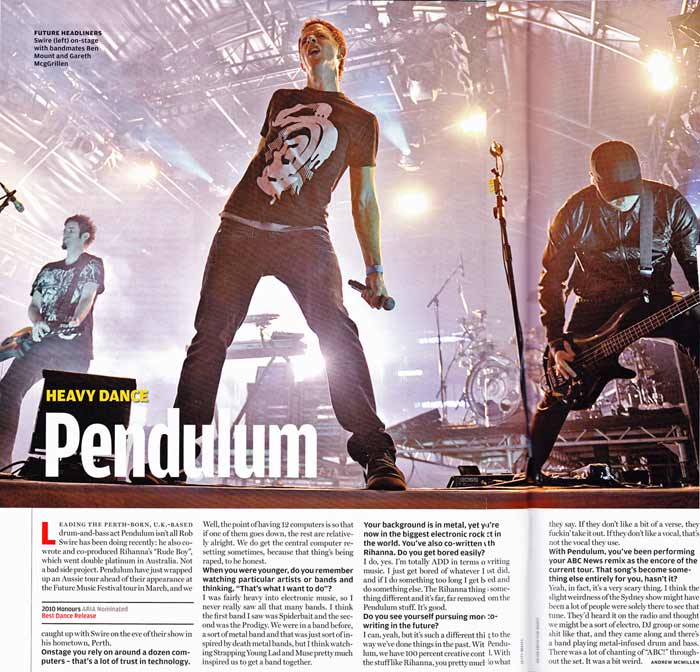

 Andrew McManus Presents always set a per-transaction ticket limit for their shows in an attempt to curb scalping. The ticket limit “varies from show to show, but is always in place. We also monitor eBay and other similar auction sites,” the promoter says. “Anyone found selling our tickets for profit runs the risk of being reported and having their listing removed, or even having their tickets cancelled. I don’t think sites like eBay should intervene on their own, but if a promoter tells them to take something down, they should. And for the most part, they’re pretty good at doing that for you.”
Andrew McManus Presents always set a per-transaction ticket limit for their shows in an attempt to curb scalping. The ticket limit “varies from show to show, but is always in place. We also monitor eBay and other similar auction sites,” the promoter says. “Anyone found selling our tickets for profit runs the risk of being reported and having their listing removed, or even having their tickets cancelled. I don’t think sites like eBay should intervene on their own, but if a promoter tells them to take something down, they should. And for the most part, they’re pretty good at doing that for you.”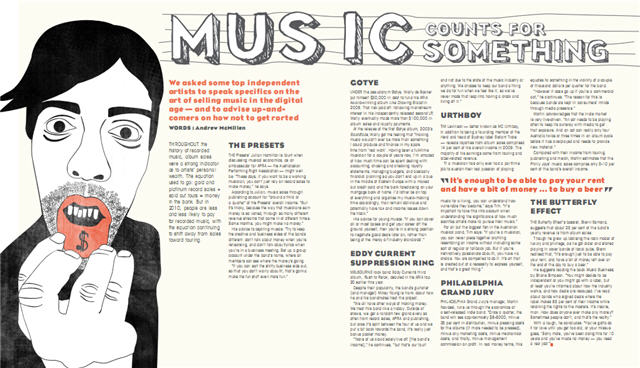
 I
I 

 Brisbane natives
Brisbane natives 
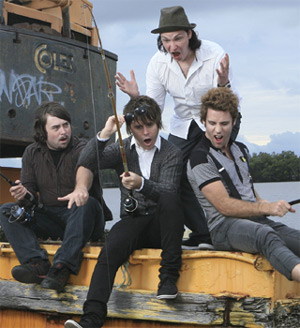 Brisbane’s
Brisbane’s 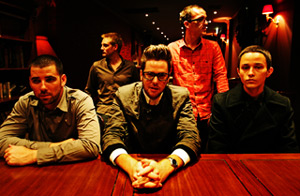 “I’m still a huge fan of putting on an album and listening to it all the way through. It’s very rare to experience an album that you can listen to from start to finish, and not get bored. It’s very rare to experience that, and it’s one of the things you look forward to in life, as a music fan – that next band that you’ll become completely obsessed with.” When questioned about the free MP3 downloads offered on the band’s Last.FM profile, Donaldson continues: “It’s still good for people to be able to download a song in reasonable quality, just in case they are thinking about downloading the full album. Because we’ve basically arrived at the situation where you can download a song for free, get a feel for the quality of it, and then decide whether you want to waste your bandwidth on it!”
“I’m still a huge fan of putting on an album and listening to it all the way through. It’s very rare to experience an album that you can listen to from start to finish, and not get bored. It’s very rare to experience that, and it’s one of the things you look forward to in life, as a music fan – that next band that you’ll become completely obsessed with.” When questioned about the free MP3 downloads offered on the band’s Last.FM profile, Donaldson continues: “It’s still good for people to be able to download a song in reasonable quality, just in case they are thinking about downloading the full album. Because we’ve basically arrived at the situation where you can download a song for free, get a feel for the quality of it, and then decide whether you want to waste your bandwidth on it!” It’s a valid comment, given that hip-hop song structures are perhaps more reliant on narrative than their rock counterparts. When asked about digital distribution’s effect on the album format, Levinson concedes: “It’s slowly changing people’s attitudes and expectations toward consumption of music. We’re in a transition period where albums retain a huge significance – but some signs suggest it’s disappearing. Stranger things have happened and trends don’t always result in their predicted outcome, though.”
It’s a valid comment, given that hip-hop song structures are perhaps more reliant on narrative than their rock counterparts. When asked about digital distribution’s effect on the album format, Levinson concedes: “It’s slowly changing people’s attitudes and expectations toward consumption of music. We’re in a transition period where albums retain a huge significance – but some signs suggest it’s disappearing. Stranger things have happened and trends don’t always result in their predicted outcome, though.”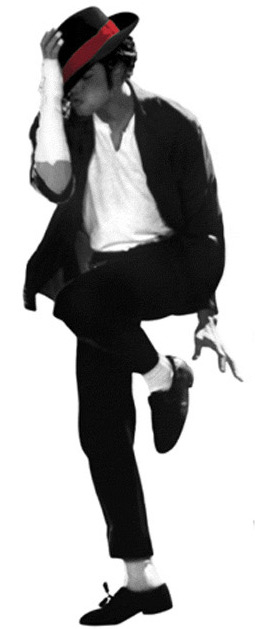 Regardless, Jackson’s enormous sales in the US simply couldn’t have eventuated ten years ago. Record stores inventories would’ve been exhausted across the country, and compact disc factories would’ve rushed to press more discs to meet the demand. Both of these outcomes still eventuated, but instead of experiencing weeks-long delays, music consumers have the option of instant online gratification: his 2.3 million download count resulted in six Jackson tracks appearing in the Billboard top ten.
Regardless, Jackson’s enormous sales in the US simply couldn’t have eventuated ten years ago. Record stores inventories would’ve been exhausted across the country, and compact disc factories would’ve rushed to press more discs to meet the demand. Both of these outcomes still eventuated, but instead of experiencing weeks-long delays, music consumers have the option of instant online gratification: his 2.3 million download count resulted in six Jackson tracks appearing in the Billboard top ten. At a national level, ARIA’s
At a national level, ARIA’s  To elaborate on the latter example: picture the average album you’d buy from a store – perhaps not in this era, since both CD shelf space and CD merchants continue to dwindle – but ten years ago. Hypothetically, the disc is likely to be front-loaded with some great songs. They’re the ones that you’re likely to have heard before you bought the album. These strategically-placed songs are the ones that either – or both – the band and record label wanted you to hear first and enjoy first.
To elaborate on the latter example: picture the average album you’d buy from a store – perhaps not in this era, since both CD shelf space and CD merchants continue to dwindle – but ten years ago. Hypothetically, the disc is likely to be front-loaded with some great songs. They’re the ones that you’re likely to have heard before you bought the album. These strategically-placed songs are the ones that either – or both – the band and record label wanted you to hear first and enjoy first. That listening habit was exploded when CD burning technology allowed listeners to compile the circular equivalent of mixtapes, without the cassette-associated fuss. As the audio filetype known as MP3 became easier for the masses to acquire online, consumer attitudes to music further deviated from the past when the first digital audio players became available in the late 1990s.
That listening habit was exploded when CD burning technology allowed listeners to compile the circular equivalent of mixtapes, without the cassette-associated fuss. As the audio filetype known as MP3 became easier for the masses to acquire online, consumer attitudes to music further deviated from the past when the first digital audio players became available in the late 1990s. In 2009, artists shouldn’t automatically sprint toward the album endpoint as a result of historical programming. Their creative output shouldn’t be stretched to meet the 45 minute/12 track (whichever comes first) expectation, just so that the parties involved can proudly call it an album. In an era where more music is being written, recorded and performed each day than at any other point in history, an artist shouldn’t throw together words, chords and beats just to meet an expectation built upon a decades-old concept.
In 2009, artists shouldn’t automatically sprint toward the album endpoint as a result of historical programming. Their creative output shouldn’t be stretched to meet the 45 minute/12 track (whichever comes first) expectation, just so that the parties involved can proudly call it an album. In an era where more music is being written, recorded and performed each day than at any other point in history, an artist shouldn’t throw together words, chords and beats just to meet an expectation built upon a decades-old concept.